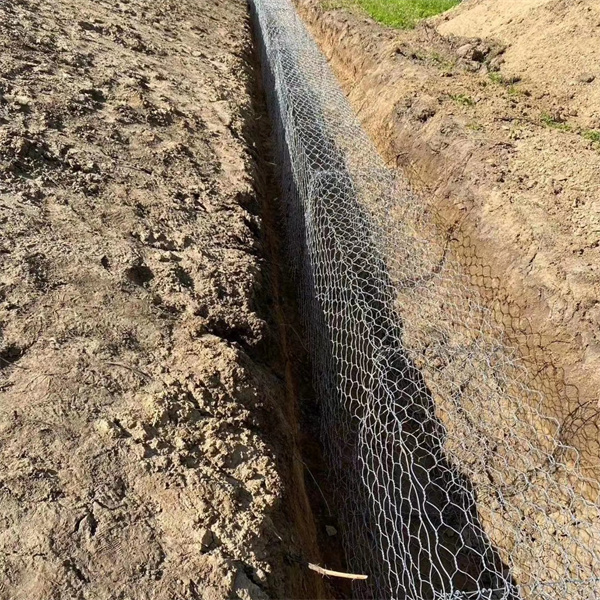ಡಿಸೆ . 05, 2024 15:26 Back to list
best filling a gabion basket
The Best Way to Fill a Gabion Basket A Comprehensive Guide
Gabion baskets have emerged as popular choices for a variety of landscaping and engineering projects. These wire mesh containers, often filled with rocks, stones, or other materials, can be used for erosion control, retaining walls, decorative landscaping, or sound barriers. One crucial aspect that determines the effectiveness and longevity of a gabion installation is how well these baskets are filled. Here’s a detailed guide on the best practices for filling a gabion basket.
Understanding Gabion Baskets
Before delving into the filling process, it is important to understand what gabion baskets are and their function. Gabions are essentially cages or baskets made from steel wire or welded mesh filled with stones or other materials. Their primary purpose is to create a sturdy structure that can withstand the forces of nature. The filling material plays a significant role in the basket's performance; therefore, careful selection and filling techniques are vital.
Choosing the Right Filling Material
The choice of filling material is crucial. Common options include
1. Natural Stone This is the most popular choice for filling gabion baskets. Natural stones not only provide durability but also blend well into natural landscapes. 2. Recycled Materials Recycled concrete, bricks, or other construction debris can be environmentally friendly alternatives. These materials are often cost-effective and can provide adequate stabilization.
3. Rounded Pebbles or Gravel Using smoother materials, such as rounded pebbles or gravel, can enhance the aesthetic appeal of the gabion while allowing for better drainage.
4. Cobbles and Boulders For larger structures or where a robust appearance is desired, larger stones can be used. Ensure that the weight of the stones does not compromise the structure's stability.
Preparing the Gabion Basket for Filling
Once the right materials have been chosen, the next step is to prepare the gabion basket
- Inspection Before filling, inspect the gabion to ensure there are no damages or deformations that could affect its structural integrity.
best filling a gabion basket

- Placement Position the gabion basket in its intended location
. They can be filled on-site or placed after filling, but ensure it's level to avoid shifting.- Lining (optional) For aesthetic purposes or to prevent smaller stones from falling through, consider lining the inside of the gabion basket with a fabric material.
Filling Techniques
Filling a gabion basket effectively requires some techniques to ensure it is packed tightly and evenly
1. Layering Begin by filling the gabion in layers. Place larger stones at the bottom and gradually work your way up with smaller stones. This layering helps create a solid base and maintains stability.
2. Compaction As you fill, compact the materials as much as possible. This can be done by hand or with tools designed for this purpose. Proper compaction will enhance the structural stability of the basket.
3. Avoid Gaps Ensure that the stones fit together as tightly as possible. Larger gaps can weaken the structure and may lead to eventual shifting or collapse.
4. Regular Checks Periodically step back to assess the filling process and ensure you're achieving an even distribution of materials. Adjust as necessary to maintain a consistent look and stability.
Finishing Touches
Once the gabion basket is filled, ensure that it is secured and properly closed if it has a lid. Tightly fasten all ends and check for any loose wires that may need reinforcement. Additionally, if the gabion will be exposed to weather conditions, consider applying a corrosion-resistant coating to enhance longevity.
Conclusion
Filling a gabion basket might seem straightforward, but attention to detail is paramount in ensuring a successful structure. The right choice of material, careful layering, and thorough compaction can significantly enhance the durability and aesthetic appeal of your project. By following these guidelines, you can create a robust, long-lasting gabion structure that stands the test of time. Whether for practical applications like erosion control or aesthetic enhancements in a garden, well-filled gabion baskets are a valuable addition to any landscape.
-
Understanding Load-Bearing Capacity of Gabion Boxes
NewsJul.17,2025
-
The Importance of Corrosion-Resistant Wire in Gabion Construction
NewsJul.17,2025
-
How Gabion Boxes Prevent Soil Erosion Effectively
NewsJul.17,2025
-
Environmental Benefits of Gabion Cages
NewsJul.17,2025
-
Best Stone Types for Gabion Walls with Steps
NewsJul.17,2025
-
Benefits of Using Rock Gabion Baskets in Landscaping
NewsJul.17,2025
-
The Role of Galvanized Gabion Mesh in Riverbank Protection
NewsJun.26,2025






